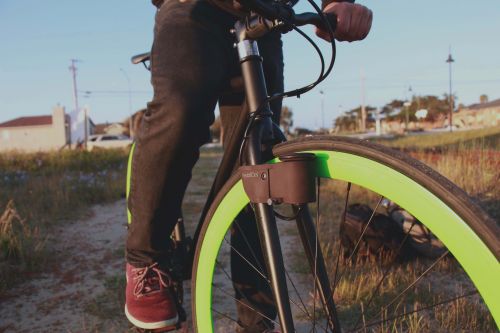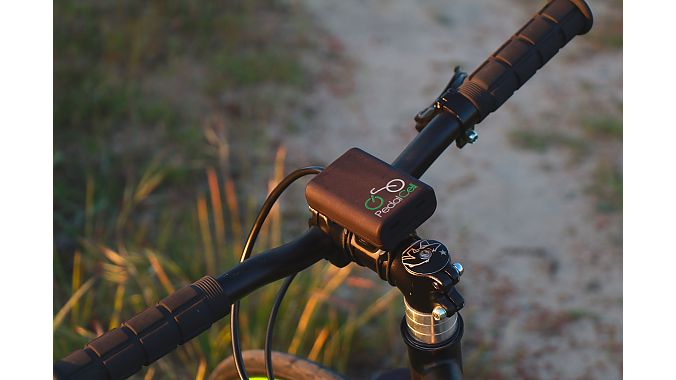CHICAGO (BRAIN) — When Adam Hokin and Vishaal Mali began designing a bicycle generator, they started from scratch and followed the Apple game plan.
Devise a closed system more powerful and efficient than what's on the market.
So the pair who met in high school and formed PedalCell began work on what would become CadenceX, a weather-proof generator and electronics package for charging devices. After four years in development, it's now available for pre-order on its website and will ship in early 2020 with an MSRP of $299.99. Customers can pre-order and save $50 for a limited time.
The company also is exploring wholesale sales through U.S. retailers.
"We started with a clean sheet when designing our system," Hokin said. "And the really unique thing we did is we designed our electronics and our generator together. We're the first to do this. We said if we optimize our electronics and generator to work together from the beginning, we can create a more efficient and higher-powered system."
Dynamo generators have been around since the 1800s and haven't adapted well to modern technologies, said Hokin, who added while efficient at powering old-fashioned lights, their volatility isn't good for smartphones, lights, or cycling computers.
"The real problem is power generation and management while you're riding," Hokin said. "What is a way to create a device that supplies continuous and stable charge to battery-powered devices, so you never have to worry about running out of juice ever again?"
CadenceX, which looks and functions similar to a bottle dynamo, powers up to two devices and generates 15-20 watts, compared to 3-6 watts from a typical dynamo. The USB-C ports are located on the handlebar- or stem-mounted Smart Power Hub. Patent-pending firmware and supercapacitors are used instead of a battery.
"So with our technology, using supercapacitors, we'll have millions of charge cycles vs. batteries, which would be around 500," Hokin said. "This is a huge advantage for product longevity and efficiency."
The end result, according to Hokin: CandenceX delivers constant and stable power not based off of speed and with minimal drag.
"We have firmware that has drag-modulation algorithms," Hokin said. "We adjust the drag based on your speed. For example, we won't pull as much power at low speeds. Since we're positioned on the rim, it also provides us with some mechanical advantage over something that's in the hub. These features make drag barely perceptible to most, and riders can choose to disengage the device at any time."
CadenceX will work with any standard bike that has a fork within a 2-inch diameter but is not recommended for use on carbon rims. The target audience is the bike-touring and bike-packing cyclist and "super commuter, delivery crowd," Hokin said.
He said a few bike-touring companies will use CadenceX next year, and some smaller bicycle brands see it as an OEM product. In addition to the website, Hokin said CadenceX will be available through about a dozen distributors globally.
"We're currently sending out production samples to dealers," he said. "This isn't a fit for every single dealer out there but really appeals to those who reach our target cyclists."
In addition to getting it to bike-touring groups, marketing is established through the website and influencers reviewing it on Instagram and YouTube, as well as reviews in cycling publications. Hokin and Mali began getting the word out last year at Sea Otter and the CABDA Chicago event.
PedalCell is based out of Chicago in the mHUB micro-factory. Assembly and R&D are done there, and components sourced globally. "We have complete control over the whole supply chain," Hokin said.




